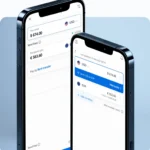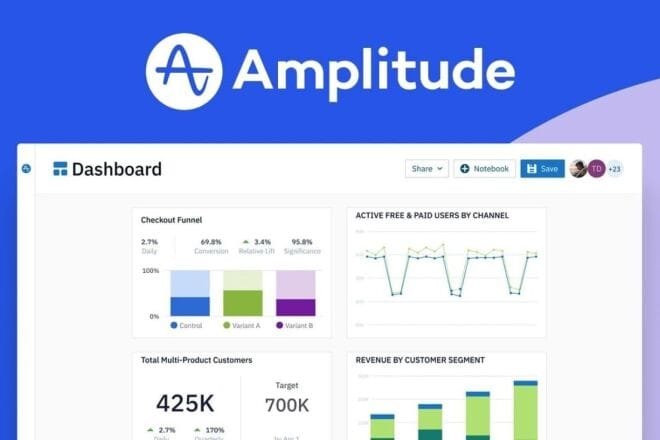Amplitude is a leading product analytics platform designed to help teams understand user behavior and optimize digital experiences in real time. It goes beyond surface-level metrics by enabling deep behavioral exploration and flexible, actionable insights directly from the platform. Its combination of prebuilt templates and powerful custom charts accelerates time‑to‑insight, making it easier to measure key metrics such as retention, engagement, and conversion rates.
Setup
Create Your Organization and Projects
Begin by signing up for an Amplitude account and creating an organization to centralize billing and user management. Once your organization is established, set up at least two projects—one for development/staging and one for production. Separating environments prevents test data from polluting your production analytics and ensures accurate insights. You can manage these projects via Settings → Organization → Projects in the Amplitude dashboard.
Plan Your Implementation and Tracking Plan
Before instrumenting events, define clear goals and identify the metrics that matter most for your product. A well-crafted tracking plan should list each event, its standardized name, associated properties, and the context in which it fires. Establish consistent naming conventions (for example, using snake_case or camelCase) to reduce confusion and minimize downstream data cleanup.
Decide on Data Ingestion Methods
Amplitude supports multiple ingestion methods, including client‑side SDKs (JavaScript, iOS, Android), server‑side HTTP APIs, and warehouse‑native integrations. Determine whether you need real‑time client events, server‑validated events, or a combination of both, then choose the appropriate SDK or API. If using the HTTP API, include session identifiers and unique event IDs to prevent duplicates and ensure correct session tracking.
Implement SDKs or APIs
Install the SDK that corresponds to your product’s platform. For a web application, integrate the JavaScript SDK; for iOS, use the Swift SDK via CocoaPods or Swift Package Manager; and for Android, install the Android SDK. After installation, initialize the SDK with your project’s API key, then verify that sample events appear in the Live Events view to confirm successful setup.
Generating Insights
Leverage Prebuilt Templates and Charts
Amplitude offers a library of best‑practice templates—such as user retention, funnel analysis, and revenue charts—that help new users dive in quickly. Browse the Templates section to find industry-specific or use-case‑based charts that align with your business objectives, then customize them as needed.
Funnel Analysis for Conversion Optimization
Use funnel charts to map out the steps users take toward a specific conversion event (for example, signing up or making a purchase) and pinpoint where drop‑off occurs. Define each step in your funnel, then apply filters by event or user property to understand how different segments move (or don’t move) through the flow. With this information, you can prioritize changes to your onboarding or checkout processes that will drive the greatest lift.
Cohort Analysis to Drive Retention
Create behavioral cohorts to group users based on specific actions (such as completing an onboarding tutorial) or attributes (like plan tier). Track these cohorts over time to see how engagement and retention evolve. Saved cohorts can be reused across other analyses—funnels, retention charts, or revenue reports—to compare power users against at‑risk segments and uncover opportunities for re‑engagement.
Deep Dive with Behavioral Segmentation
Amplitude’s segmentation features let you filter any chart by event or user property (region, device type, subscription level, etc.) at the first step of your analysis. This granular control reveals how distinct user groups behave differently throughout your funnels or retention curves, enabling you to tailor product experiences and marketing campaigns to each group.
Also read: From Console to PC: Mighty Ape’s Best Deals for Every Gamer
Best Practices
Maintain a Consistent Event Taxonomy
Adopt a clear, concise taxonomy for event names and properties, and document it in a living tracking plan that’s accessible to your entire team. Use a unified casing style (snake_case or camelCase), avoid redundant prefixes, and standardize property names. Consistency simplifies filtering, cohort creation, and cross‑team collaboration.
Separate Environments and Manage API Keys
Keep development, staging, and production data isolated by using distinct Amplitude projects with separate API keys. Rotate keys periodically and restrict write permissions on production keys to prevent accidental or unauthorized data ingestion, thereby maintaining data integrity.
Leverage Learning Resources and Documentation
Amplitude Academy offers on‑demand courses and guided learning paths—like “Getting Started with Analytics”—to help teams level up their skills and earn certifications. Regularly consult the official documentation for updates on SDK releases, new features, and advanced configuration options to stay current.
Iterate and Review Instrumentation
As your product evolves, so should your analytics implementation. Schedule regular audits of your event taxonomy to remove unused events, refine properties, and capture emerging use cases. Involve stakeholders—product managers, engineers, analysts—in quarterly reviews to realign on business goals and ensure your tracking remains relevant.
Integrate with Other Tools
Extend Amplitude’s capabilities by connecting it to data warehouses (such as Snowflake), messaging platforms (like Slack), and ETL or BI tools through native or third‑party integrations. Bi‑directional data flows enable richer context, automated alerts, and deeper analysis in your preferred business‑intelligence environments.
Conclusion
By following these steps—establishing separate environments, planning your tracking meticulously, choosing the right ingestion methods, and leveraging Amplitude’s prebuilt analysis tools—you’ll unlock the full power of product analytics. Coupled with a consistent event taxonomy, ongoing audits, and strategic integrations, these best practices will ensure your data remains reliable, actionable, and aligned with both current initiatives and long‑term business objectives.







